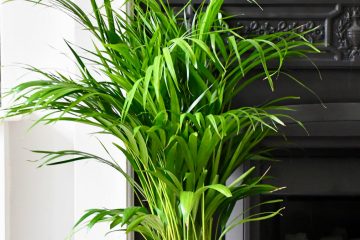When I first considered using a humidifier, one of the primary questions I had was whether I could use it without a filter. This thought was driven by the desire to reduce ongoing costs and simplify maintenance. Humidifiers are essential appliances in many households, especially during dry seasons or in arid climates. They help maintain optimal humidity levels, which can improve respiratory health, preserve wooden furniture, and reduce static electricity. In this article, we will delve into the practicality and implications of using a humidifier without a filter, weighing the benefits and potential drawbacks.
Table of Contents
ToggleWhat It Humidifiers
To fully grasp the implications of using a humidifier without a filter, it’s essential to understand how humidifiers work. There are several types of humidifiers available on the market, each with unique mechanisms and benefits.
Types of Humidifiers
- Evaporative Humidifiers: These use a fan to blow air through a wet wick or filter, adding moisture to the air. They naturally regulate humidity levels, making them a popular choice.
- Ultrasonic Humidifiers: These create a fine mist using ultrasonic vibrations. They are typically quieter and can be used without a filter, although some models include filters to address specific concerns.
- Steam Vaporizers: Also known as warm mist humidifiers, these heat water to create steam, which is then cooled before being released into the air. They are excellent for reducing germs and bacteria but can be more energy-intensive.
Role of Filters in Humidifiers
Filters in humidifiers serve to trap minerals and impurities from the water, preventing them from being dispersed into the air. This is particularly important in areas with hard water, as it helps prevent the buildup of white dust and maintains the efficiency of the humidifier.
Benefits of Using Humidifiers
Humidifiers offer numerous benefits, including alleviating dry skin, reducing allergy symptoms, and preventing respiratory issues. They also help preserve wooden furniture and musical instruments by maintaining consistent humidity levels.
Benefits of Using a Humidifier Without a Filter
The idea of using a humidifier without a filter can be appealing for several reasons. First and foremost, it can lead to significant cost savings. Filters need to be replaced regularly, and the costs can add up over time.
Cost Savings
Without the need to buy replacement filters, the ongoing cost of maintaining a humidifier is significantly reduced. This makes filterless models more budget-friendly in the long run.
Convenience and Ease of Maintenance
Filterless humidifiers are generally easier to maintain. There is no need to worry about replacing filters or dealing with clogged filters that can affect the humidifier’s performance. This simplicity can be a significant advantage for busy individuals or those who prefer low-maintenance appliances.
Environmental Impact
Using a humidifier without a filter also has a positive environmental impact. Disposable filters contribute to waste, and by eliminating the need for them, you reduce your carbon footprint. This is an appealing consideration for environmentally conscious consumers.
Drawbacks of Humidifier Without a Filter
Despite the advantages, there are some potential drawbacks to using a humidifier without a filter that should be considered. It’s important to weigh these against the benefits to make an informed decision.
Risk of Bacterial and Mold Growth
Without a filter, there is a higher risk of bacteria and mold growth inside the humidifier. Filters help trap these contaminants, reducing the chances of them being dispersed into the air. Regular and thorough cleaning is essential to mitigate this risk in filterless humidifiers.
Possible Reduction in Air Quality
Filterless humidifiers may release more impurities into the air, especially if tap water is used. This can lead to the buildup of white dust, which consists of minerals from the water. Using distilled or purified water can help reduce this issue.
Maintenance Requirements
While filterless humidifiers are generally easier to maintain, they do require regular cleaning to prevent the buildup of mold, bacteria, and mineral deposits. This maintenance can be more frequent compared to models with filters.
Comparing Filtered vs. Filterless Humidifiers
Comparing filtered and filterless humidifiers can help determine which option is best for your needs. Each type has its own set of advantages and disadvantages, and the choice largely depends on your priorities and circumstances.
Performance Differences
Filtered humidifiers tend to provide cleaner air because they trap impurities and prevent them from being released into the environment. Filterless humidifiers, on the other hand, may require more frequent cleaning to ensure optimal performance.
Long-Term Costs and Maintenance
While filterless humidifiers save on the cost of replacement filters, they may require more frequent cleaning and maintenance. Filtered models, although slightly more expensive to maintain, often require less frequent cleaning.
User Experience and Satisfaction
User satisfaction varies based on individual preferences and experiences. Some users appreciate the low maintenance and cost savings of filterless models, while others prefer the peace of mind that comes with filtered humidifiers.
Comparing Filtered and Filterless Humidifiers
| Feature | Filtered Humidifiers | Filterless Humidifiers |
|---|---|---|
| Maintenance | High (change filters) | Low (clean often) |
| Cost | Higher (buy filters) | Lower (no filters) |
| Noise | Louder | Quieter |
| Air Quality | Better | Varies |
Product Recommendations
Based on my experience and research, here are a few filterless humidifiers that I would recommend:
- Pure Enrichment MistAire Ultrasonic Cool Mist Humidifier: Compact, efficient, and easy to maintain, this model is ideal for those seeking a filterless option.
- Vicks Filter-Free Ultrasonic Visible Cool Mist Humidifier: Known for its reliability and effectiveness, this humidifier is a popular choice among users.
- Honeywell Designer Series Cool Mist Humidifier: Stylish and functional, this humidifier offers a great balance of aesthetics and performance.
Case Study: My Experience with the Pure Enrichment MistAire Ultrasonic Cool Mist Humidifier
To provide a real-world perspective, I decided to test the Pure Enrichment MistAire Ultrasonic Cool Mist Humidifier, which operates without a filter. Here’s what I found:
Initial Setup and Impressions
Setting up the Pure Enrichment MistAire was straightforward. The unit is compact and aesthetically pleasing, fitting seamlessly into my living space. Without the need for a filter, initial setup was quicker compared to traditional models.
Daily Use and Maintenance
In daily use, the MistAire performed admirably. It produced a fine mist that effectively increased humidity levels in my room. Maintenance was simple – a quick rinse and wipe down every few days kept the unit running smoothly. However, I noticed that using tap water resulted in a fine layer of white dust, which was resolved by switching to distilled water.
Observations on Air Quality and Health Effects
After a few weeks of use, I observed an improvement in air quality and a reduction in dry skin and respiratory discomfort. The convenience of not having to replace filters was a definite plus, but regular cleaning was necessary to maintain these benefits.
Tips for Using a Humidifier Without a Filter
If you choose to use a humidifier without a filter, there are several tips that can help you maximize its benefits and minimize potential issues.
Regular Cleaning Routine
Regular cleaning is crucial to prevent the buildup of mold, bacteria, and mineral deposits. Aim to clean your humidifier at least once a week, or more frequently if you use it daily.
Using Distilled or Purified Water
Using distilled or purified water can significantly reduce the risk of mineral buildup and white dust. This simple step can improve the performance and longevity of your humidifier.
Monitoring Humidity Levels
Keep an eye on the humidity levels in your home using a hygrometer. Maintaining humidity levels between 30% and 50% can prevent the growth of mold and bacteria while providing optimal comfort.
Alternative Solutions
For those who are concerned about the potential drawbacks of filterless humidifiers, there are alternative solutions to consider.
Humidifiers with Permanent, Washable Filters
Some humidifiers come with permanent, washable filters that offer the benefits of filtered humidifiers without the ongoing cost of replacement filters. These models provide a good balance between convenience and air quality.
Air Purifiers in Conjunction with Humidifiers
Using an air purifier alongside your humidifier can help improve air quality by removing contaminants that a filterless humidifier might release. This combination can be particularly beneficial for individuals with allergies or respiratory issues.
Natural Ways to Increase Indoor Humidity
If you prefer to avoid appliances altogether, there are natural methods to increase indoor humidity. Placing bowls of water near heat sources, using houseplants, and air-drying laundry indoors can all help boost humidity levels.
Frequently Asked Questions
Throughout my research and personal experience, I encountered several common questions about using humidifiers without filters.
Can Using a Humidifier Without a Filter Cause Health Problems?
Using a humidifier without a filter can potentially cause health problems if not properly maintained. Regular cleaning and using distilled water can help mitigate these risks.
How Often Should I Clean a Filterless Humidifier?
It’s recommended to clean a filterless humidifier at least once a week, or more frequently if you use it daily. Proper maintenance is key to preventing mold and bacteria growth.
What Type of Water Should I Use in a Filterless Humidifier?
Using distilled or purified water is best for filterless humidifiers. This helps prevent mineral buildup and the dispersion of white dust.
- Homvana Humidifiers Tested and Reviewed: Quiet, Efficient, and Aromatic - December 6, 2024
- FULMINARE H13 True HEPA Air Filter Review: Air Purifiers for Bedroom - December 4, 2024
- Best Air Purifiers for Mold Under $100: Affordable Solutions for Clean Air - December 3, 2024


